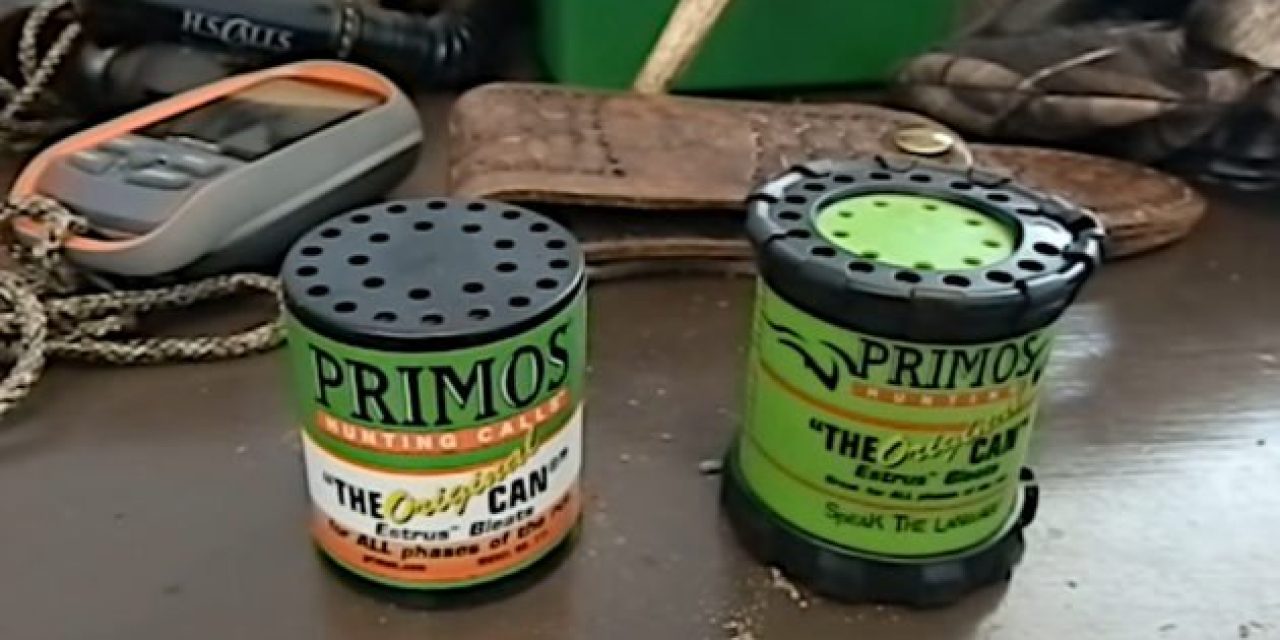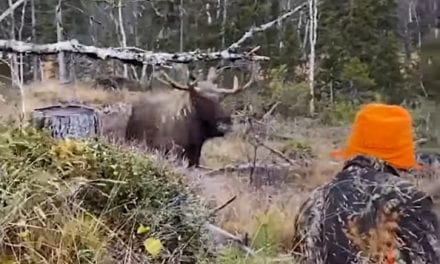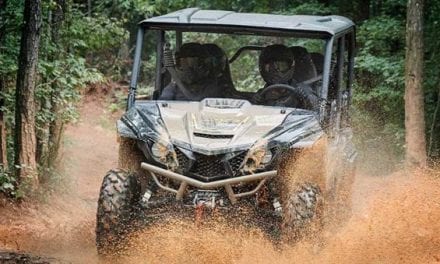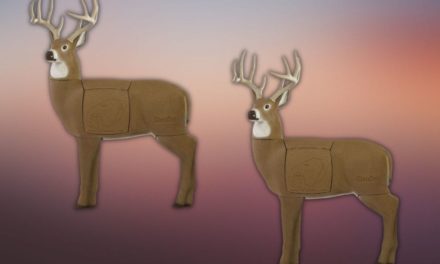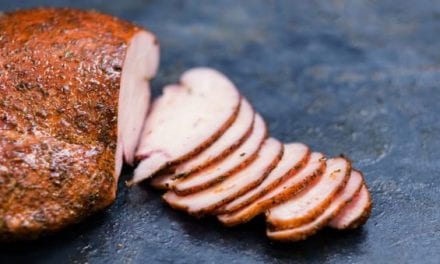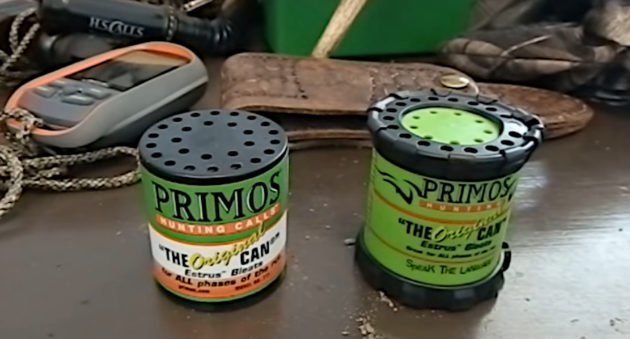
Do deer bleat calls work? We’ll break things down and help you make the right choice.
It’s a question that many hunters have, and we can’t blame them. At one point or another I’m sure you’ve looked at the various bleat calls on the rack at your favorite sporting goods store, and at least entertained the thought.
Deer bleats are a nasally-sounding whine and they usually elicit a laugh the first time you hear them. Some hunters think a call this silly can’t possibly work.
But deer bleats are a vital form of communication for both whitetails and mule deer. The smart hunter knows which calls to use and how to use them.
What are deer bleats?
If you’ve never heard a doe bleat in the wild before, you’re not alone. I’ve been hunting 20 years, but until last season, I had never heard this deer call in person before.
I had heard snort wheezes, buck grunts, tending grunts and doe grunts before, but bleats seem much less common.
It’s a subtle call that sounds more like a whine or “bawl” sound that is sometimes hard to hear unless the deer is right on top of you. I wasn’t even sure it really was a bleat the first time I heard it, until I saw the doe actually do it.
Does use bleats to communicate many things to other deer, but the one most hunters are familiar with is estrus bleats. This vocalization is used to signal to bucks that a doe is ready to breed.
Used properly, an estrus bleat can bring a lonely buck running in a hurry!
The bleats I heard last season came from a doe milling about with a group of others. It wasn’t an estrous bleat. I’m not sure exactly what that deer was communicating with the others, but I’m sure it was some sort of social context with the rest of the group we humans simply cannot understand.
Another common deer vocalization is a fawn bleat. Fawns bleat for many reasons. They may be lost or scared or they’re hungry. No matter the context, fawn bleats are effective at bringing does in. More on that later.
How to find the right deer bleat call
The call you choose is going to be dependent on the context in which you’ll be hunting. Most hunters are going to be focused primarily on deer bleats during the rut or pre-rut. Most of the pros agree that bleat calls are going to work best during the pre-rut when this sort of communication is so important.
There are two primary types of bleat calls on the market today. There are the standard calls that resemble grunt tubes and produce a higher pitch to mimic the natural sounds of a doe in heat.
The other option is the “can style” calls. These calls quickly began to dominate the market when Primos introduced one of the first ones. Almost immediately, every other call maker was scrambling to make their own versions of the can.
In fact, can style calls have dominated the market so much, it’s difficult to find a reed-based mouth call anymore. Most of the reed-based calls now are often combo adjustable calls that make several different kinds of sounds. The Primos Revolver call that does grunts and a variety of bleats. Most of the reed-based bleat calls now seem to be dedicated fawn bleat calls designed to bring does into bow range.
If you’re going for a can-style bleat call, just know that not all calls are created equal. I wouldn’t cheap out on a can call. I’ve bought less expensive versions before and most of them broke in no time flat if they saw just a little bit of moisture or got jarred around a little in my hunting bag.
When selecting a can, make sure it has some sort of safety mechanism that keeps it from going off by accident. For most calls, this is a small thumbhole in the bottom that you must cover before the call does its thing.
I own an electronic can call from Primos and I can’t say I really recommend it over the original. Primarily because I found it was too easy to hit the button by accident while walking out or while shifting my weight in the treestand. Using game calls at the wrong time can hurt your deer hunting more than it helps!
When choosing a call, keep in mind your hunting area and the hunting pressure. Your odds of successfully calling deer are going to be more effective in some areas than others. I live in Michigan and the whitetail deer are under a tremendous amount of pressure. Some of the can calls are made in larger and more aggressive sizes. I wouldn’t use those in a high-pressure state like Michigan.
The reason is because the animals are already on edge and if you get too aggressive in your calling, there is the potential to scare more animals than you bring in. Aggressive calls like that are probably better suited for states like Kansas or Oklahoma where the buck to doe ratio is much better in proportion and competition among bucks is fierce.
How do you use a deer bleat call?
If you’ve ever hunted on public land, no doubt you’ve encountered another hunter that is being way too aggressive in their calling. They’re clashing antlers together every five minutes, grunting and bleating enough to scare every deer in the county away with their unnatural sequences.
Using a call is simple, especially if you’re using a can. Just turn it over let the sound flood the woods. When using a bleat call, you don’t want to get too aggressive. When you do a sequence of bleats, try to limit it to only two or three at the most. You want to peak the buck’s curiosity and bring him in for a closer look.
If you bleat too much, there is always the chance a buck could sneak in behind you and spot your position before you even know he’s there.
Sequences should be spaced out a bit too. Try every 30 minutes to an hour. You can also try deer calling to an animal you see in the distance. Don’t be surprised if you see a buck respond to your call by circling downwind. He wants to see if he can catch a whiff of the doe before committing. A well-placed doe estrus scent may help him do just that in this scenario.
When to use a deer bleat call?
Most bleats are going to work best in a pre-rut scenario. The reason for this is simple: this is the time when the bucks are still cruising. They’re all looking for the first doe to go into heat.
That doesn’t mean a bleat call can’t work during the peak of the rut, but many mature bucks will find a doe and then won’t leave her side no matter how much you bleat at them. After all, he’s got a girl. Why expend unnecessary energy chasing another?
Using a bleat call is all about timing. Your best chance of success is when the buck is between breeding does and is looking for his next mate. So, there is some element of luck involved with it.
Remember the fawn bleat we talked about earlier? That is mostly going to be effective in the early season when many does still have their fawns around. Although, they can be effective year-round. The sound taps into the deer’s maternal instincts and they can’t help but investigate.
While fawn bleats can bring in a buck, they’re much more effective on does. Have you ever been in a scenario where you can see a buck bedded down with a doe in the distance? Sometimes these bucks are so focused on the doe that they won’t respond to grunt calls or sparring sequences with your rattling answers.
This is when you change tactics. If you can get the doe’s attention with a fawn bleat, it’s a good bet the buck will follow her right into bowhunting range.
Bleats can work in the late season, but again, it’s going to be mostly luck at that point because most of the does have probably already been bred.
Big whitetail bucks can sometimes be a lot more wary of these calls late in the season as they’ve dealt with hunting pressure.
Every muley or whitetail hunter should have a bleat call in their arsenal right next to their deer grunt call. Used at the right time in the right place, they can help you put a lot of venison on the table in a hurry!
For more outdoor content from Travis Smola, be sure to follow him on Twitter and check out his Geocaching and Outdoors with Travis Youtube channels.
NEXT: THE LEGALITIES, TRENDS AND EFFICACY OF DEER HUNTING WITH SHOTGUNS
WATCH
The post How to Find the Right Deer Bleat Call for Hunting appeared first on Wide Open Spaces.

